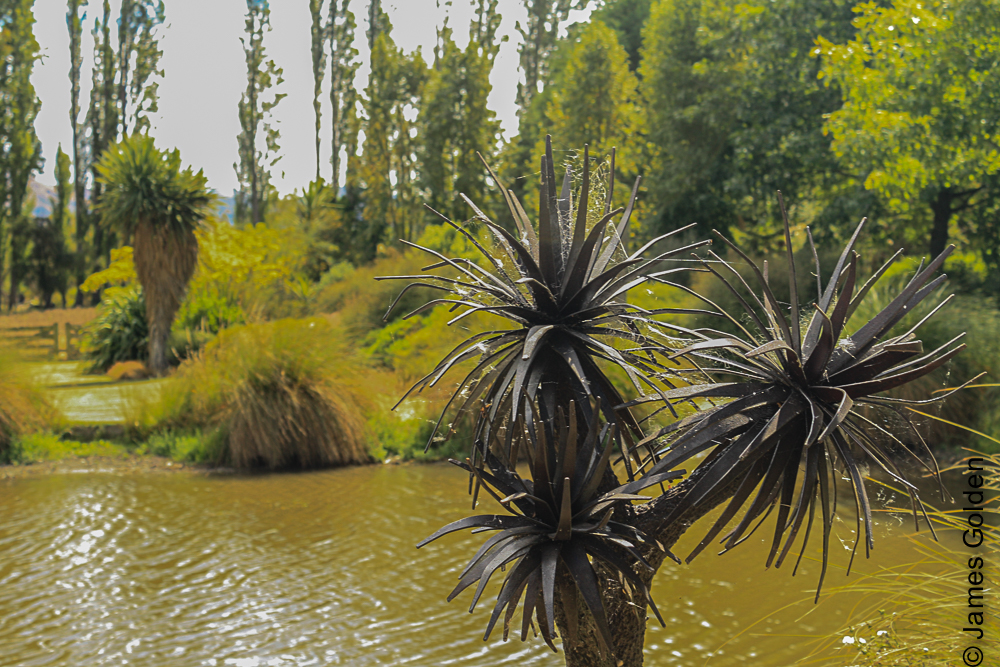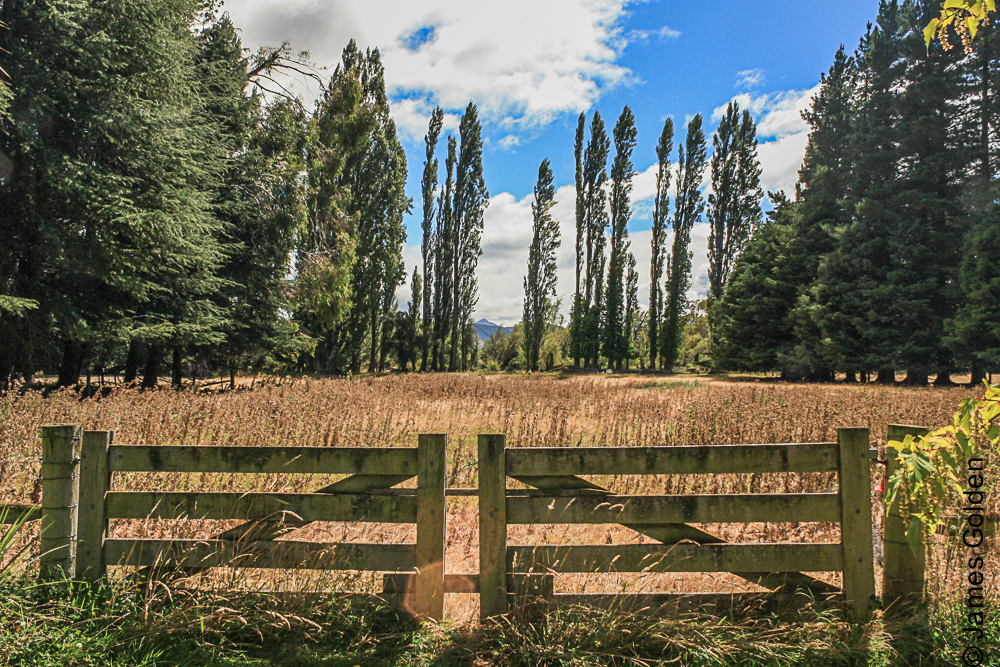Flaxmere
Flaxmere, a garden near Christchurch, on the South Island of New Zealand, is a quiet beauty. We visited in February 2014, in the height of summer there. The country has such extraordinary growing conditions, some New Zealand gardens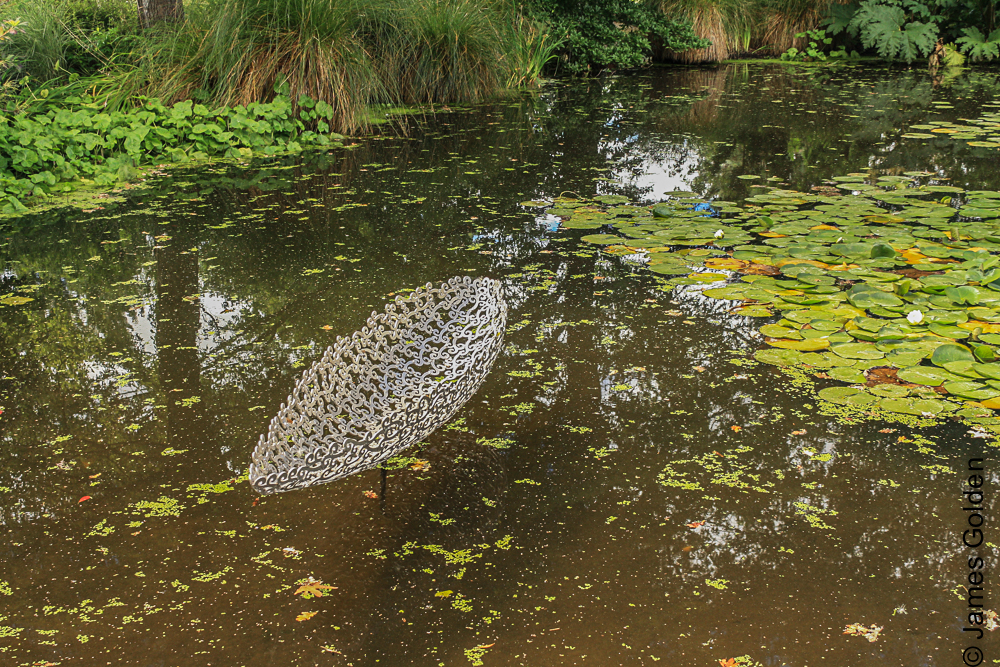 have an overstuffed, jumbled look lacking in harmony. But Flaxmere is designed to make subtle use of a magnificent landscape and with restraint in planting. Its distant mountains views, though kept secondary to the main garden, are spectacular end points to several long vistas.
have an overstuffed, jumbled look lacking in harmony. But Flaxmere is designed to make subtle use of a magnificent landscape and with restraint in planting. Its distant mountains views, though kept secondary to the main garden, are spectacular end points to several long vistas.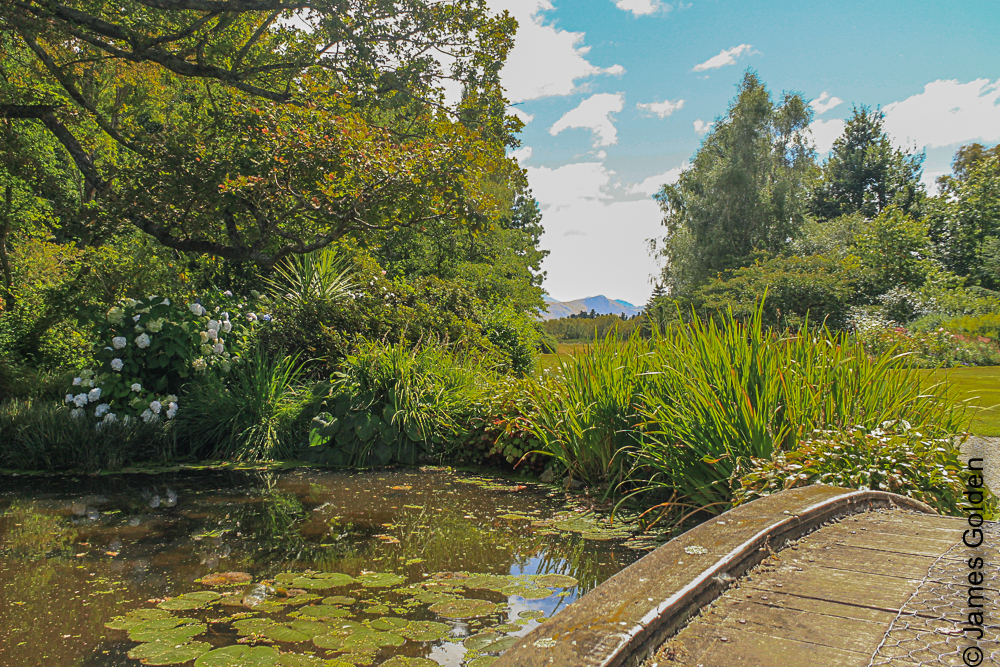 The garden is organized around linked ponds that are really its heart. The garden, I felt, references Giverny, though it doesn't attempt to imitate it. Flaxmere is very successful in its own right and beautifully suited to its extraordinary site.
The garden is organized around linked ponds that are really its heart. The garden, I felt, references Giverny, though it doesn't attempt to imitate it. Flaxmere is very successful in its own right and beautifully suited to its extraordinary site. The more traditional part of the garden is planted with a mixture of natives and exotics, such as this North American prairie perennial, Filipendula rubra 'Venusta' and across the water (below), native cabbage trees, Cordylines.
The more traditional part of the garden is planted with a mixture of natives and exotics, such as this North American prairie perennial, Filipendula rubra 'Venusta' and across the water (below), native cabbage trees, Cordylines.
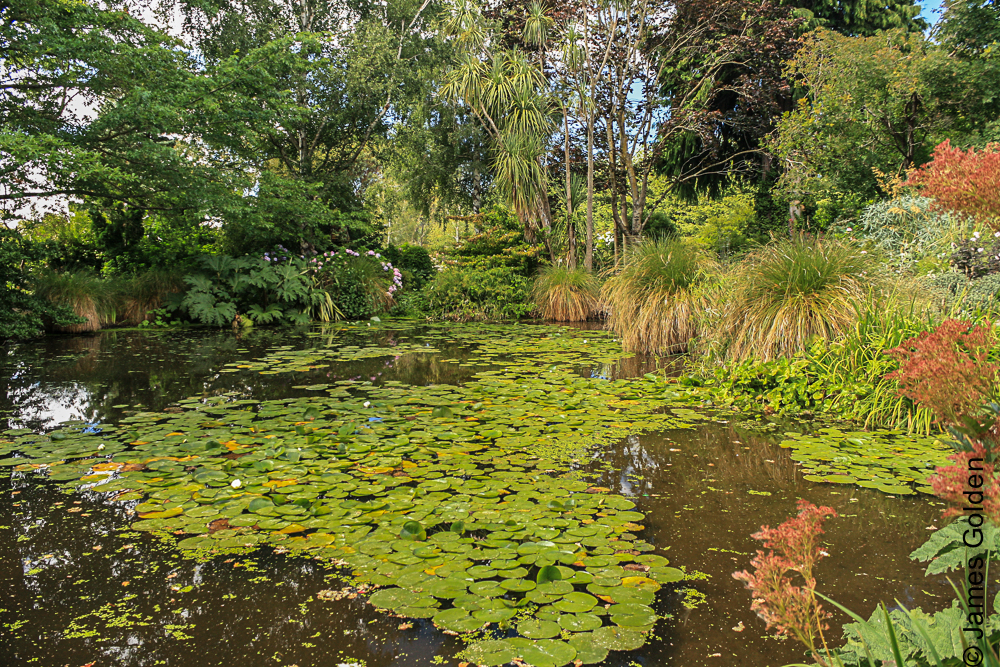 You can see a Gunnera tinctoria across the pond, and below, its fruiting body. I believe this plant is native to Chile. (If this isn't correct, please let me know.)
You can see a Gunnera tinctoria across the pond, and below, its fruiting body. I believe this plant is native to Chile. (If this isn't correct, please let me know.)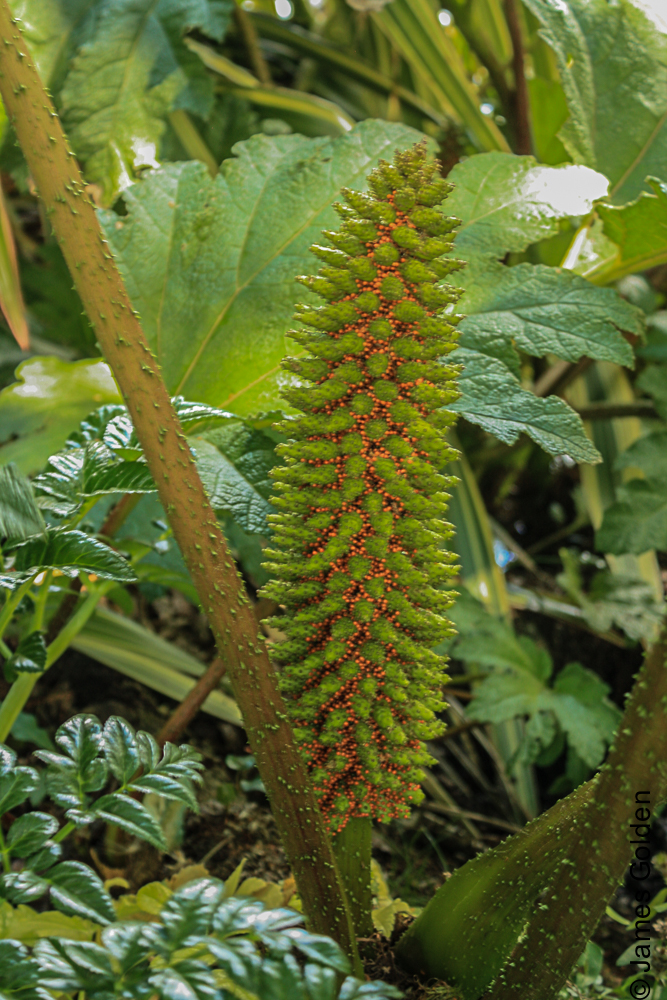
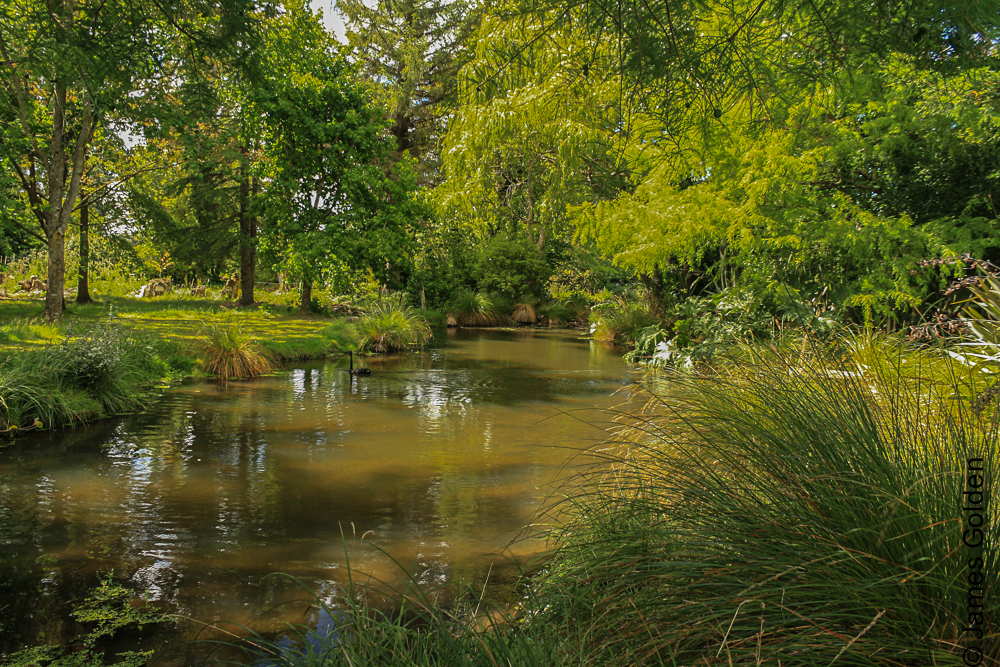 I originally thought the black swan might be kitsch, but I was corrected by Diana Studer of South Africa, who tells me they are native to Australian wetlands in the southwest and southeast, and to New Zealand, where they were hunted to extinction, then reintroduced. The garden is open for weddings and other events, and I'm sure the swan is a highly desirable feature for such occasions.
I originally thought the black swan might be kitsch, but I was corrected by Diana Studer of South Africa, who tells me they are native to Australian wetlands in the southwest and southeast, and to New Zealand, where they were hunted to extinction, then reintroduced. The garden is open for weddings and other events, and I'm sure the swan is a highly desirable feature for such occasions.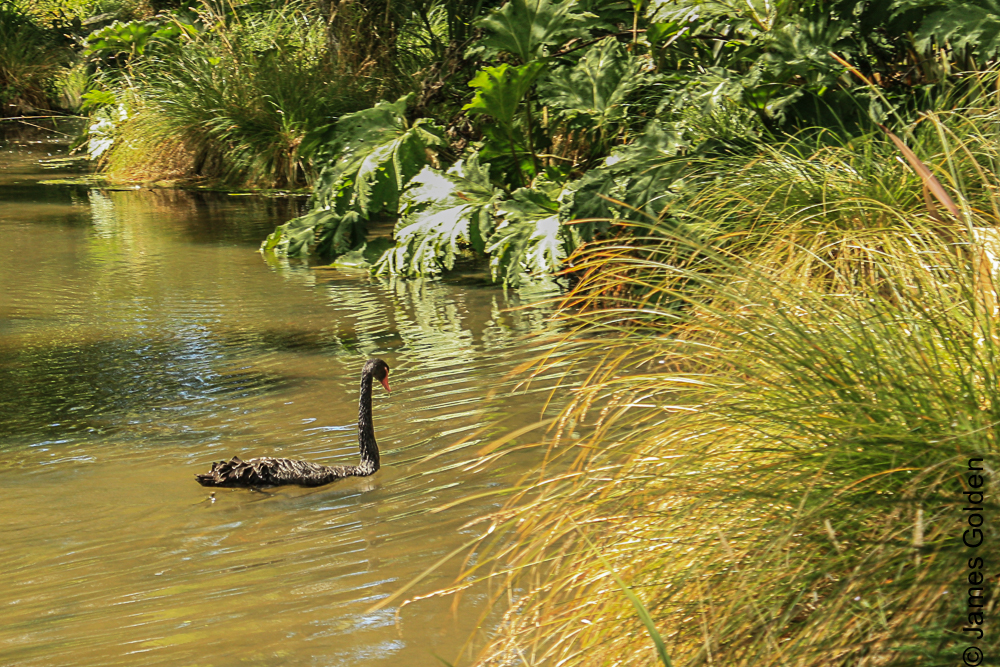 The bridge makes a perfect arc over the water.
The bridge makes a perfect arc over the water.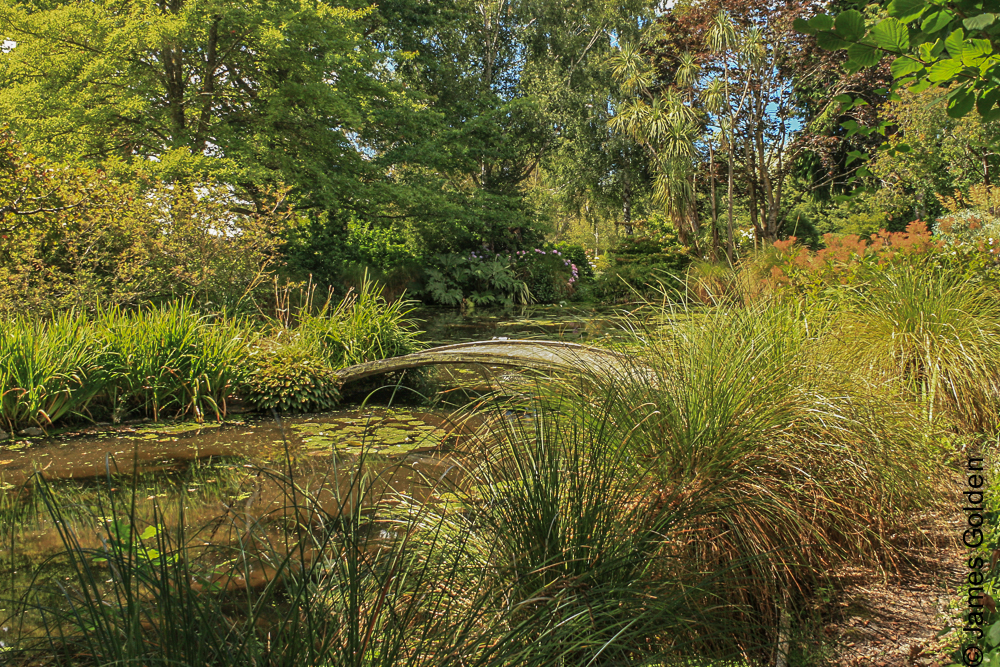
 The view from the house overlooks a large pond and extends to the mountains beyond, making a quite masterful composition of near garden growth, natural vegetation in the mid-distance, and mountains completing the view.
The view from the house overlooks a large pond and extends to the mountains beyond, making a quite masterful composition of near garden growth, natural vegetation in the mid-distance, and mountains completing the view.
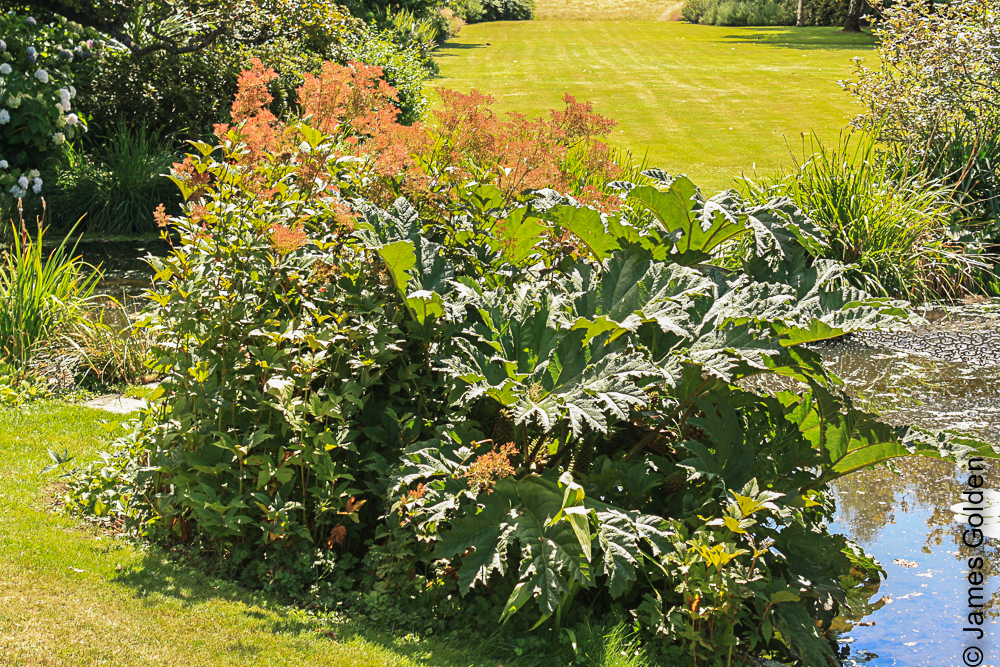 Where there isn't a mountain to terminate the view, two Lombardy poplars work nicely.
Where there isn't a mountain to terminate the view, two Lombardy poplars work nicely.

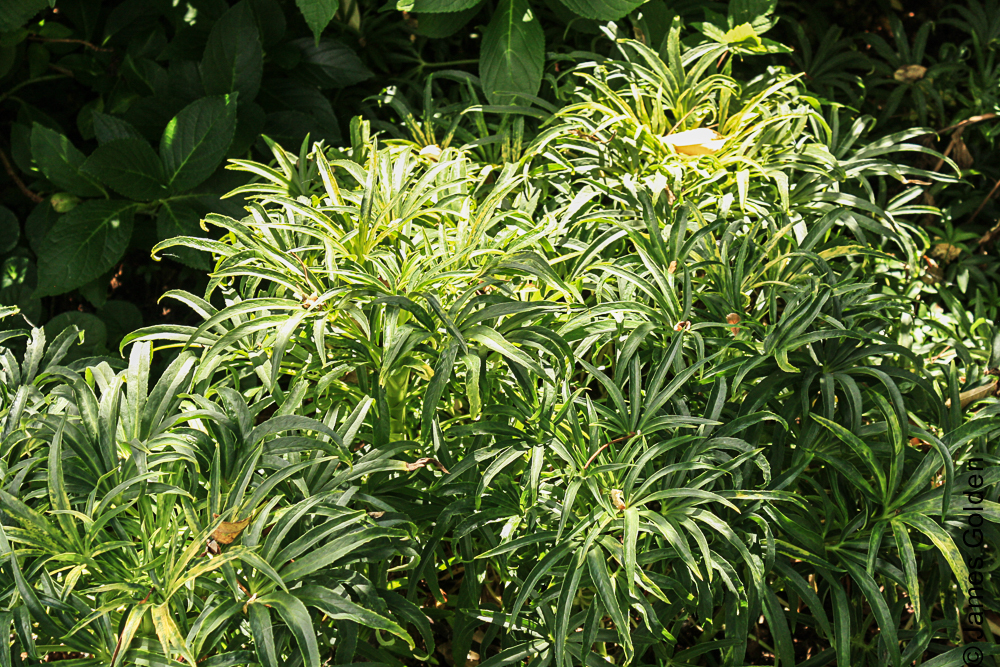 Looking out into the landscape outside the garden, you see a dramatic contrast of natural with cultivated landscape.
Looking out into the landscape outside the garden, you see a dramatic contrast of natural with cultivated landscape.
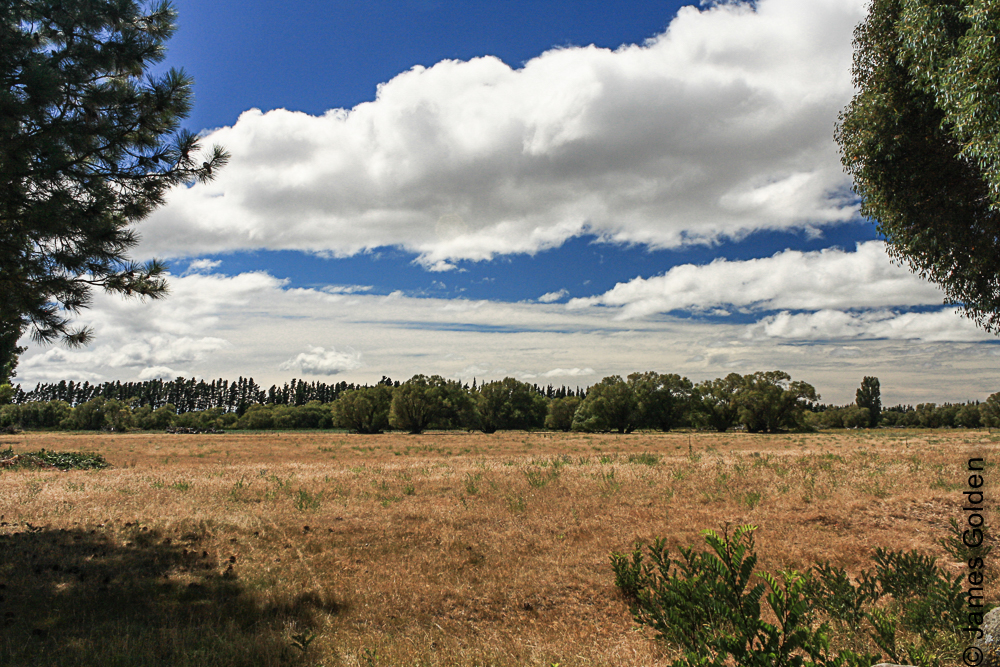 On the opposite side of an intervening woodland garden is this native plant garden.
On the opposite side of an intervening woodland garden is this native plant garden. Because of the woodland buffer there's absolutely no dissonance between the two parts of the garden, and they both share similar distant mountain views.
Because of the woodland buffer there's absolutely no dissonance between the two parts of the garden, and they both share similar distant mountain views.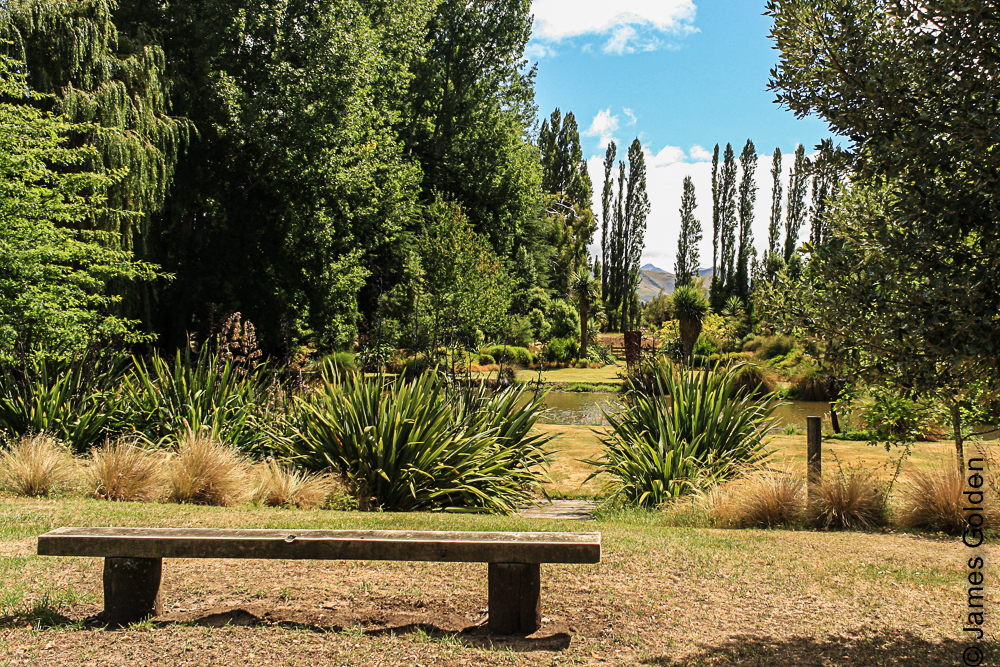
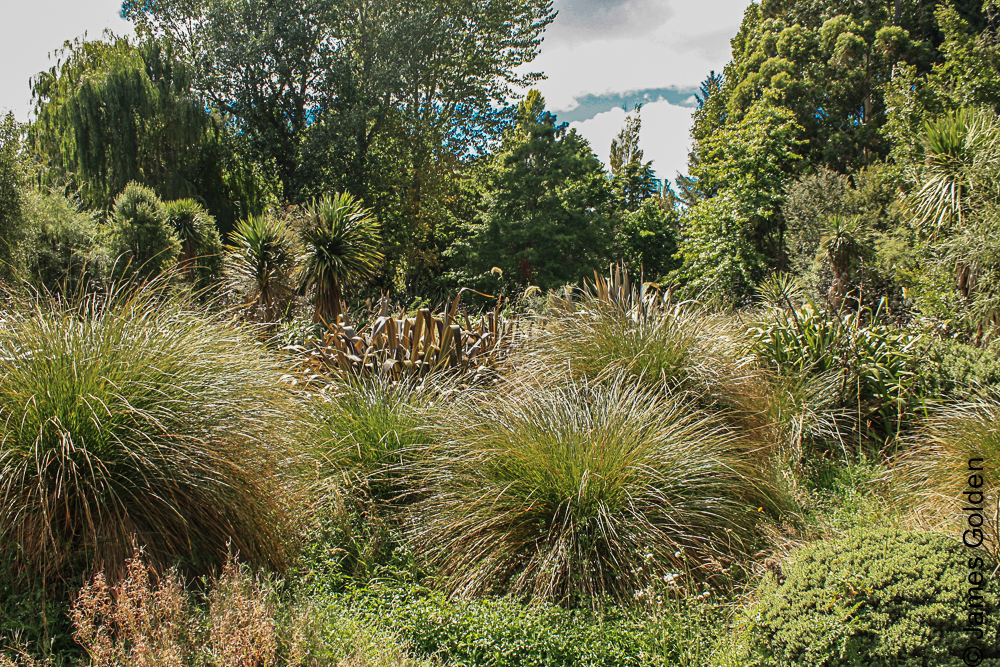
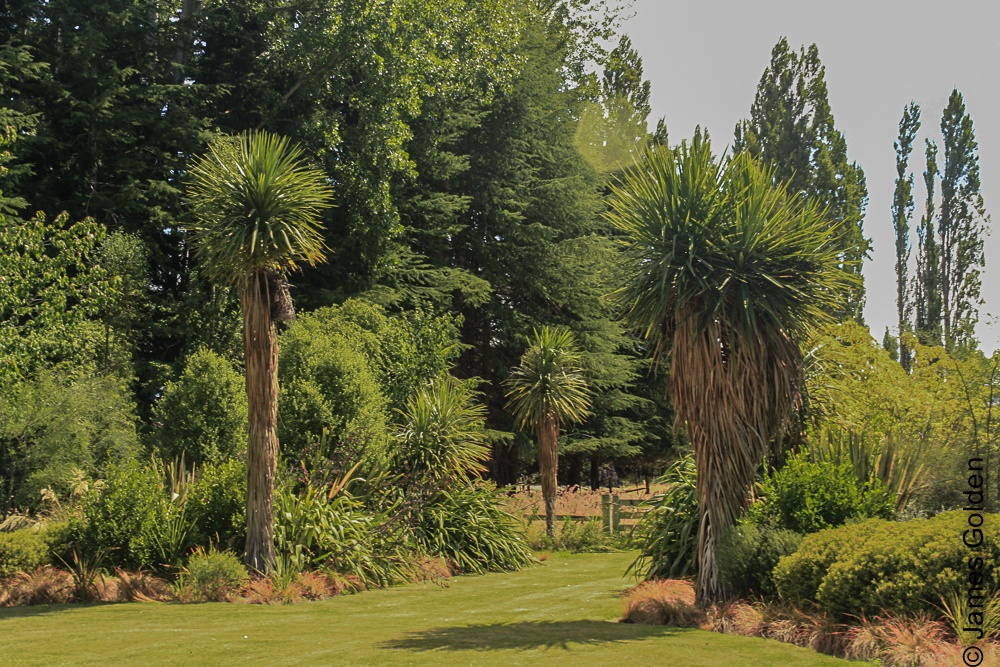
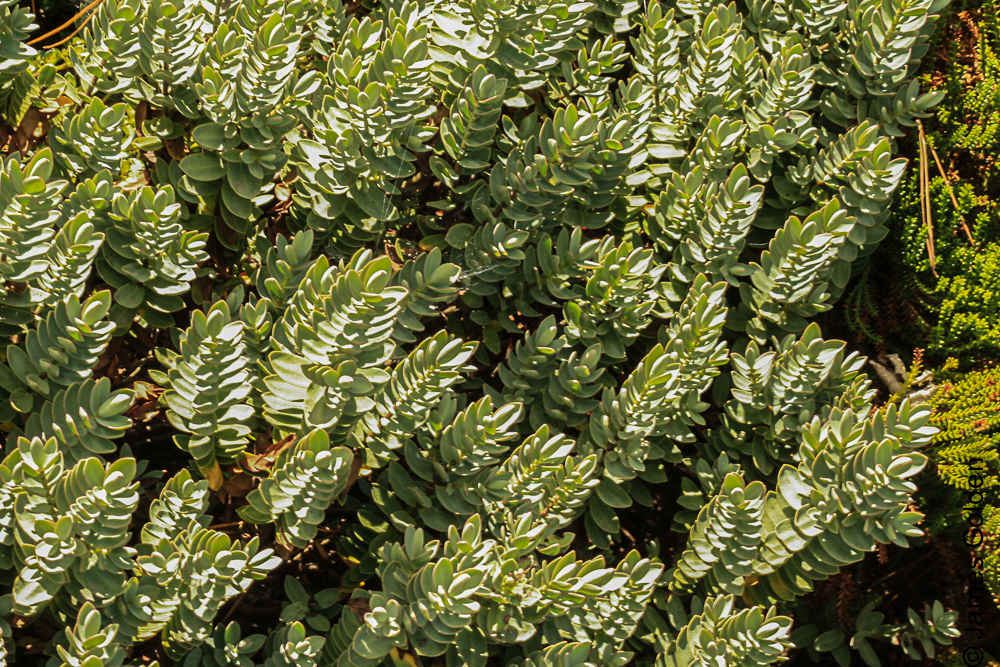
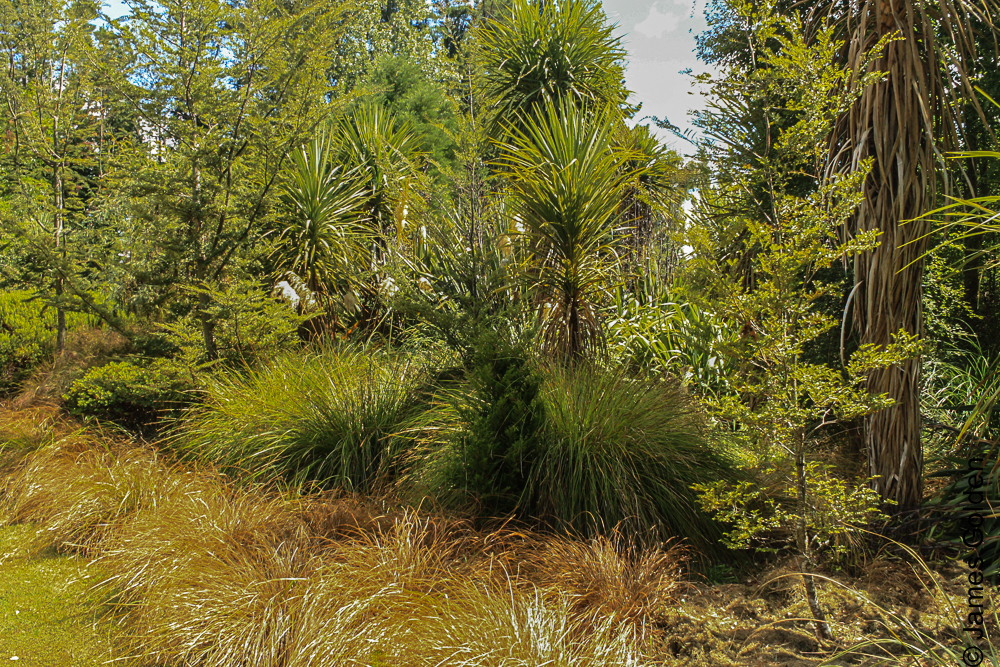
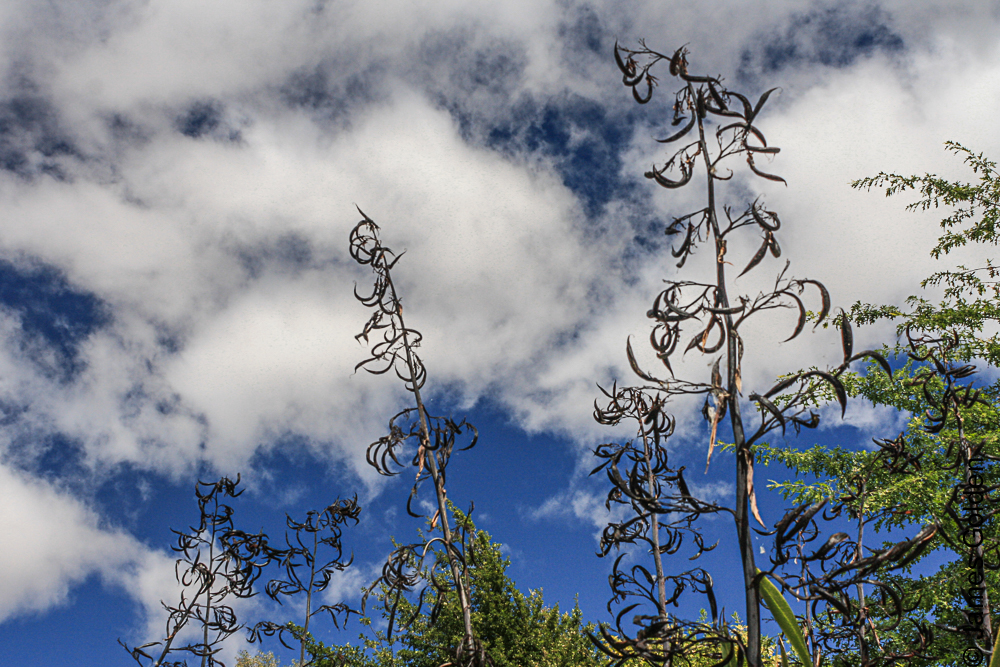 Seed heads of New Zealand Flax (Phormium), a distant relative of our daylily (Hemerocallis). You see the resemblance if you closely examine the seed pods.
Seed heads of New Zealand Flax (Phormium), a distant relative of our daylily (Hemerocallis). You see the resemblance if you closely examine the seed pods.